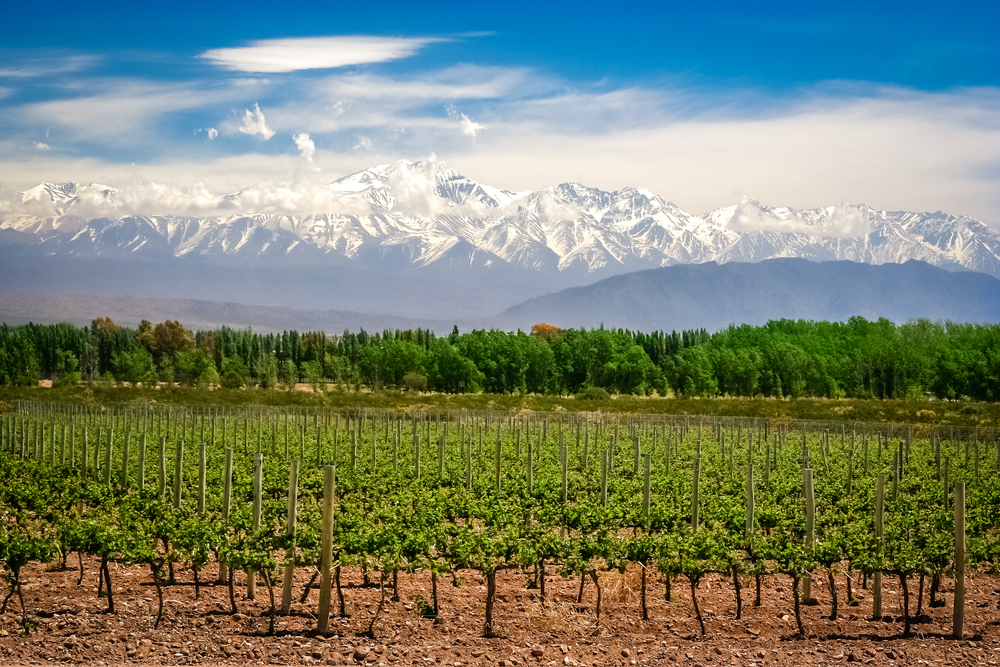When people know you’re “well traveled” they make assumptions. Rather than ask you, “Have you been to a particular destination” they’ll ask, “How did you like a place?” Lately, that’s been happening with Argentina and Buenos Aires. People assumed I’d been there. I have and want to return! I’m no stranger to South America. It looks like next year’s itinerary could include a return visit.
Due to the pandemic, travel was pushed forward. However, a return trip to Argentina was in the planning stages when the pandemic began. Obviously, I put the trip on hold. However, my trip planning was done and my interest in history and culture never stops! As I learn, I share, so thought it would be fun to write about some of the fascinating things I learned about Argentina and lead you on this armchair tour of this extraordinary culture and destination. You might just want to add Argentina to your post-pandemic bucket list of places to visit.
Traveling to Argentina
Let’s travel to the opulent Argentina—one of the largest countries on the globe (#8 to be exact). I’ll share much more about several specific fabulous Argentinian sites: the capital city of Buenos Aires, and one of the newer wonders of the world: Iguazu Falls.
To understand the bigger picture of what makes these places so unique, let’s start with some background on Argentina.
Argentina: Vast and Varied!
Argentina is surrounded by five countries: Chile, Bolivia, Paraguay, Brazil, and Uruguay. Nearly 3,000 miles of Atlantic coastline form the country’s eastern boundary. The country is shaped like an upside down pyramid, extending 880 miles from west to east at the top.
Because of its vast size, it has a varied geography and a range of weather systems. From plains to deserts, miles of coast, rivers to mountains, you might say Argentina has it all!
In fact, Argentina extends its borders into Antarctica (think: penguins) and the Islas Malvinas (also known as the Falkland Islands).
The four regions that comprise Argentina are the Andes, the North, the Pampas, and Patagonia.

Visit Argentina for world-class wine, exciting culture, and incredible landscapes.
For some historical context, Argentina declared its independence from Spain in 1816, after 300 years of colonization. While independence was a victory for the Argentinians, a variety of political groups have fought bitterly for control of the country over the years.
Repressive governments and military dictatorships ruled for decades (Juan Perón’s regime is probably best known). In 1982 Argentina asserted its control over the Falkland Islands, in an attempt to take it from Britain. The British defeated Argentina, which resulted in the fall of the military government and establishment of democratic government.
Pro Tip: Be sure to get the best deals on hotels. If I’m paying cash for a hotel stay, I always use Pruvo to monitor for price drops!
The Argentinian People
Unlike other South American countries, Argentina has a population with high European ancestry. This is because of heavy immigration from Spain and Italy over the centuries. Indigenous populations to Argentina comprise less than 10% of the current population.
Like most South American countries, most people are Roman Catholic, though it’s interesting to note that Argentina has the largest Jewish community in South America. Many Jews immigrated to the country during and after World War II.

Traditional mate served with breakfast
Argentina has a strong economy and is considered one of the wealthier countries in South America. It has strong agribusiness and ranching industries, and produces more grain than any country in Latin America. It also has a huge tourism industry.
Argentina is also known for a couple of special activities and at least one interesting beverage. Check out this link to learn more about the Argentinian beverage yerba mate, and of course I could have written a whole article on the Argentinian Tango.
All About Visiting Buenos Aires
Buenos Aires is the capital of Argentina. It has a population of close to 3 million people (with 15 million in the greater Buenos Aires area).
Some interesting trivia surrounds the city’s name: apparently the Spaniard Pedro de Mendoza named the city Nuestra Señora Santa María del Buen Aire—Our Lady St. Mary of the Good Air.
Because of Argentina’s wealth and the city’s location, over history several foreign powers have invaded, coming through Buenos Aires. Spain and France fought for control of the country. The British fought for control in the early 1800s.
In the early 20th century Buenos Aires was becoming increasingly industrialized. It opened its gates to Europeans, welcoming a flood of immigrants from Spain, Italy, Britain, and Germany. A large population of Jews also arrived and settled. These waves of immigration added to the cultural mix we find in Buenos Aires today.
More Spaniards immigrated after the Spanish Civil War (1936-1939). On a darker note, after World War II, the Perón government allowed the migration of Nazi War criminals (1946-1955).
In fact, because so many people immigrated to Buenos Aires, Argentina from Europe arriving at the city’s port by boat, locals are called porteños or “people of the port.”
Buenos Aires is known for its cosmopolitan nature and European character. The city has a colonial architecture style, with narrow streets forming a grid pattern. Although the city lacks high or fancy buildings, it has numerous unique neighborhoods marked by coffeehouses and bars.
Visitors and residents alike enjoy the busy energy of Buenos Aires. It is a city full of cultural events, entertainment, shopping, and nightlife. And let’s not forget that Argentina’s famous tango dancing is popular in many clubs and bars.
Fun Facts For Traveling to Buenos Aires, Argentina
Here are several interesting facts about Buenos Aires, Argentina.
The city boasts an extremely literate population. More than 25 newspapers serve Buenos Aires. The Buenos Aires Herald is an English-language paper, one of the oldest of its kind in the region.
Along the same lines: According to a study by the World Cities Culture forum, Buenos Aires has the highest number of bookshops per person than any other city in the world.
The port in Buenos Aires is the largest in all of South America. Each year, it brings in millions of items that are sent all around the continent.
Very similar to Washington D.C., Buenos Aires is its own federal district where the president of the country lives.
Soccer—or football, to be more accurate—is king!
In Buenos Aires, 8 of the top 20 teams play their home matches in the capital city. This causes intense rivalries among the teams from Buenos Aires, which is only fueled by the fact that soccer is so important to so many Argentines.
Buenos Aires, Argentina has the widest street in the world: Avenida 9 de Julio. It’s named for the day in 1816 when Argentina won its independence from Spain. Construction was completed in 1930. With 12 lanes wide, it’s impossible for a pedestrian to cross the whole street at one time. This paseo connects the north with the south of Buenos Aires.
Visiting Iguazu Falls
While you’re in the neighborhood (South America), you’ll want to visit the breath-taking Iguazu Falls. It’s not exactly close to Buenos Aires (18 hours by bus… or 2 hours by plane), but well worth the voyage.
Brazil, Paraguay, and Argentina border these majestic cascades—which are one of the newest seven wonders of the world (2011). They are one of the widest waterfalls in the world.
An indigenous word, Iguazu, in English means “big waters” and that is exactly what you’ll find when you visit Iguazu Falls. The San Antonio River is the confluence of the falls. The river is more than 800 miles long!
Over 132 million years ago, a volcanic eruption in Argentina formed a chasm in the earth, resulting in this magnificent site.
As a point of reference, Iguazu Falls is twice as wide as Niagara Falls, and it is also wider than Victoria Falls in Zambia. It also outranks Niagara in terms of highest annual average water flow.
In fact, Iguazu Falls is not one waterfall but the combination of more than 200 smaller waterfalls. “The Devil’s Throat” is the most impressive fall. It’s a cataract in the shape of a U, with more than a dozen falls plunging down more than 350 feet.
Numerous bird species can be found at Iguazu Falls, as well as hundreds of species of fish, monkeys, and a raccoon type animal called the coatis.
Do you like rainbows? The mixture of mist and sun surrounding the falls forms a perpetual rainbow.
Final Thoughts
Maybe it’s that pandemic pent-up energy starting to lift, but I’m ready to pack my bags (including my tango heels). The combination of cosmopolitan culture, history, and the wonders of nature are drawing me southward!
Related:
- These Hacks Save Money on Every Hotel Stay
- When I book award tickets for my international travels, I always rely on Juicy Miles! They get me the best deals to maximize my miles and points.
- 9 Awesome Travel Accessories To Pack for Your Next Trip
- My Favorite Travel Resources and Products
The responses below are not provided or commissioned by the bank advertiser. Responses have not been reviewed, approved or otherwise endorsed by the bank advertiser. It is not the bank advertiser's responsibility to ensure all posts and/or questions are answered.
6 comments
I have been to Victoria Falls and Iguazu Falls (never seen Niagara), and I can say it is by far the more impressive. I am well travelled and I rank Iguazu as the most profound of any site I have visited. Followed by the Great Wall of China, the Grand Canyon, and sunrise in the Himalayas.
Thanks for reading and taking the time to add to the list of impressive sites. You are indeed well travelled!
Glad to read about Buenos Aires. The lockdown has been brutal there. You mentioned, “Although the city lacks high or fancy buildings”. That isn’t true. There are many high and fancy buildings in Buenos Aires. Just head over to Puerto Madero or even in Palermo there are lots of high rises. In fact, I own several apartments in high towers that are very nice.
True, there aren’t many high buildings in Recoleta, San Telmo, Belgrano and other neighborhoods but to say there are none is far from the truth.
Thanks for the correction Mike. Much appreciate what you added so readers will know better:) I have friends in BsAs so I know what you mean about the lockdown being brutal. Sad. Thanks for reading and taking the time to comment.
Iguazu Falls is really amazing, one of my bucket list to visit there, thanks for sharing!
Glad you enjoyed the article, Toba, and have a great trip to Iguazu Falls :))